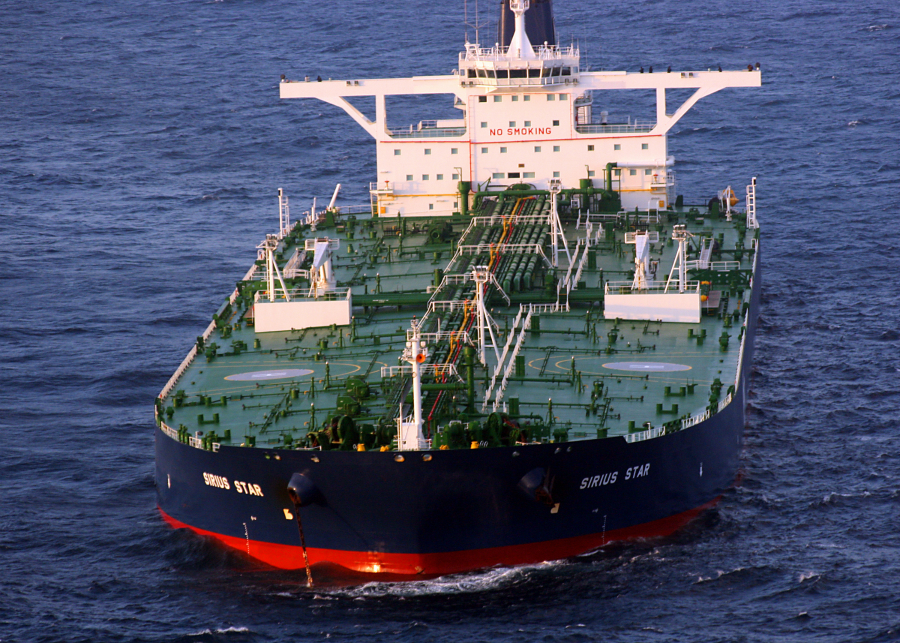
Acting under a court order, Iranian naval forces have seized a Marshall Islands-flagged oil tanker called "St. Nikolas," which reports claim is a "U.S. oil tanker," but that Iran previously owned before the United States basically stole it from Iran last year.
The incident occurred at 3:30am GMT on January 11 in the Gulf of Oman between Sohar and Muscat in Oman. According to reports, the vessel was boarded by four to five "armed unauthorized persons" who were "wearing military-style black uniforms."
The tanker was being chartered by Turkish Petroleum Refineries Corp. It was transporting 140,000 tons of Iraqi SOMO crude and was en route to Aliaga in western Turkey.
The United Kingdom Maritime Trade Operations (UKMTO) authority was the first to report on the hijacking, which occurred about 50 miles east of Sohar, Oman. The vessel had "altered its course towards Iranian territorial waters, and communications with the vessel had been lost," the UKMTO revealed in an announcement.
#BREAKING: Iran seized a oil tanker in the Gulf of Oman that was in the center of a dispute between Iran and the US pic.twitter.com/azify6leyN
— Amichai Stein (@AmichaiStein1) January 11, 2024
The tanker which the Iranians have boarded today in the Gulf of Oman is the ST NIKOLAS (9524475); carrying Iraqi oil. Formerly known as the SUEZ RAJAN; she was seized by the US government for having transported a million barrels of Iranian oil in connection to a US company. pic.twitter.com/0eMLbtIjwO
— TankerTrackers.com, Inc. (@TankerTrackers) January 11, 2024
(Related: Former Israeli defense minister Avigdor Lieberman says that in order for Israel to ensure its "self-defense," Israel Defense Forces [IDF] must invade and occupy southern Lebanon for the next 50 years.)
Pentagon expanding "Operation Prosperity Guardian" to cover Red Sea and Hormuz Strait
Bloomberg later confirmed that the Marshall Islands-flagged tanker was, in fact, taken back by Iran. The reason why some reports are stating that St. Nikolas is U.S. owned stems from reports that the vessel in question was seized from Iran last year by the U.S. while sailing under a different name, "Suez Rajan." According to the U.S. government, Suez Rajan was "transporting unauthorized Iranian cargo," and thus had to be seized.
Empire Navigation, the vessel's current operator, says the vessel now running as St. Nikolas was carrying 145,000 tons of crude collected at the Iraqi port of Basra with plans to move through the Suez Canal. All communication with the vessel was lost following the takeover by Iran.
The Automatic Identification System (AIS) the vessel was equipped with has transceivers used for identifying and locating it as it passes through various international waters. That system was switched off at the time of the takeover.
The hijacking, as the Western media is calling it, occurred very close to a chokepoint at the Hormuz Strait, located between Oman and Iran. The incident caused crude prices in London to rise by about two percent.
Prior to the incident, U.S. Navy warships reportedly shot down two dozen missiles and drones in the Red Sea in an Iran-backed Houthis attack that The Associated Press (AP) described as the "largest-ever barrage of drones and missiles targeting shipping in the Red Sea attack."
Because of the more recent hijacking, the Pentagon's Operation Prosperity Guardian, a mission to safeguard critical commercial shipping lanes, now has to worry about the conflict spreading from the Red Sea to the Hormuz Strait.
"So Iran is 'hijacking' back a ship the U.S. stole last year? For transporting 'unauthorized Iranian cargo?' So the U.S. gets to decide who can ship cargo across the open ocean, and if they don't like it they can just steal your ship, but if you reclaim it you're a "hijacker?' Welcome to the Twilight Zone," wrote a commenter about the ridiculousness of the West's "hijacking" claims with regard to St. Nikolas.
The latest news about the escalating conflict in the Middle East can be found at Prophecy.news.
Sources for this article include:
Please contact us for more information.



















